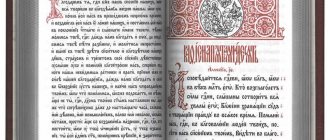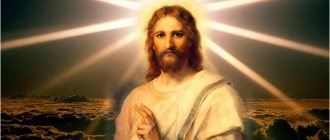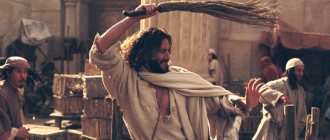There are some terms whose meaning can vary greatly. Moreover, this can happen not only because of the context, but also because of several semantic connotations that these terms have. In order not to look stupid in a given situation, people try to study such words. However, there are times when a person is unable to understand the essence of a certain concept. For example, many people do not know what Golgotha is. And if anyone understands that this is a mountain in Jerusalem, he has absolutely no idea what other meaning this word carries. To shed light on the mystery of the concept of “Golgotha”, we will plunge into the history of the origin of Christianity.
Mount Golgotha
From Hebrew, the word “Golgotha” means “place of the forehead.” In other words, the territory where people were executed. In Christianity, this term represents one of the most important shrines and places of worship of all Christians. According to legends, Golgotha is the name of the mountain on which Jesus Christ was crucified.
Thus, this place is the personification of the end of the earthly life of the son of God and the beginning of his heavenly stay until the Last Judgment.
Golgotha, as the site of Jesus' crucifixion, plays a fairly important role in history. It should be remembered that important or even turning-point historical events took place at this place. It is not known exactly what happened at Golgotha, apart from the classical version of events. Therefore, at present, all events from the life of Jesus Christ are subject to comprehensive study in order to shed the light of truth on them.
Meaning in Orthodoxy
What does Golgotha mean in a spiritual sense for people?
The spiritual meaning of Golgotha for people
In fact, the location of the frontal place is less important than its sacred meaning. This is the place where the Lord Christ was crucified
Before this, He was beaten, but He endured everything and hung there on the cross, so that every person in the world could have salvation from sin and eternal life!
On the meaning of the cross for Christians:
Important! Golgotha is the place of execution where the Lord allowed His Son to be crucified for every person in this world. Jesus took everyone's sin to the cross
Thanks to this hill, the place of death, every believer in Christ has eternal life. Thus, the place of execution and shame became a symbol of the joy and greatness of our King!
Jesus bore everyone's sin on the cross. Thanks to this hill, the place of death, every believer in Christ has eternal life. Thus, the place of execution and shame became a symbol of the joy and greatness of our King!
Video about Calvary - the place of the crucifixion of Jesus Christ
Books
Other books on request "Golgotha" >>
We are using cookies for the best presentation of our site. Continuing to use this site, you agree with this.
We advise you to study the Icon of Paraskeva Friday
Historical location of the place
If we talk about Golgotha as the “place of execution” where Jesus Christ met his fate, then it must have real geographical coordinates. Considering the traditions of the 1st century AD then reigning in Jerusalem, Golgotha was located outside the city walls. This was done in order not to desecrate the sacred borders of the city with an unholy act (execution). Therefore, in the 1st century, Golgotha was located northwest of the city. Nowadays, the Church of the Holy Sepulcher is located on this site, located in the area of the old quarter of Jerusalem.
At the moment, this is, in fact, an ordinary building in which three Christian shrines are located: the Holy Sepulcher, Golgotha, and the Slab of Anointing. There are other versions of the historical location of Golgotha. Some scholars are confident that this place was located in the north of Jerusalem in close proximity to the Damascus Gate. There is a legend that Golgotha is the burial place of Adam himself, but no evidence has been found to support this.
Way of the Cross of Jesus Christ
About the Way of the Cross
and the sufferings of Christ are told by each of the four Evangelists
.
In Pretoria
They tear off Christ’s
purple robe
and clothe him in his clothes.
The Savior takes up his cross,
the way of the cross
begins .
Christ was followed by “a great multitude of people and women, who wept and lamented for him” (Luke 23:27). They also led two robbers condemned to death.
Having been brought to Golgotha, those sentenced to death were given wine mixed with myrrh (resin) to drink, but Jesus did not accept it.
After the crucifixion, the Roman soldiers divided Christ's clothes and cast lots to see who would get the tunic. And nearby “at the cross of Jesus stood His Mother and His Mother’s sister, Mary of Cleopas, and Mary Magdalene.” (John 15:25)
Who helped the Savior carry the Cross
Evangelist Luke tells about who helped Jesus Christ:
“And when they led him away, they captured a certain Simon of Cyrene
coming from the field, they laid a cross on him to carry after Jesus.” (Luke 23:26). Evangelist Mark calls Simon “the father of Alexander and Rufus” (Mark 15:21).
Cyrene is a city in Libya. This episode has great symbolic significance. Thus, it is not an Israeli who serves the Lord, but a person who is a stranger by birth. The sacrament of the Old Testament sacrifices is no longer valid; the Cross of Christ is intended for the whole world, for all peoples.
Another understanding of the word “Golgotha”
There is an expression: “everyone will ascend to Golgotha.” In the vastness of domestic countries, this expression has undergone slight changes and therefore sounds like this: “everyone carries his own cross.” Although these are two different sentences, the meaning is the same.
It must be remembered that Jesus sacrificed himself for the salvation of mankind. He preached love and mutual understanding, but his father is the ruler of heaven or God was angry with people, so we all carry our own cross in life, ascend to our own Golgotha. In this context, “Calvary” and “cross” represent problems, life’s troubles, personal suffering and other obstacles that prevent one from moving forward in life.
Many theologians interpret this judgment differently. In their opinion, those who are able to ascend to Golgotha are worthy of forgiveness and success in life. In other words, overcoming difficulties, we repeat the feat of Jesus and experience his suffering. Everyone will ascend to Calvary, because all people are God's creatures, just like Jesus himself. In recent history, the word “Golgotha” is used in other meanings, for example, to designate a place where a person has a very hard time.
History and location
The Israeli shrine is located in the west of the country, near the border with Jordan. Its height is only 11.4 m above sea level. Previously, the mountain was connected to Gareb Hill, but after the destruction of the latter it became part of the temple complex built on this site. About 3 million pilgrims visit the holy place every year, and the queues outside it never end, day or night.
We advise you to study the Icon “Consolation”
Golgotha - the place near Jerusalem where Jesus was crucified
If we go back to the origins, the Hebrew word “Golgotha” means “place of execution,” that is, a scaffold. People were crucified on it, and the corpses of those executed along with crosses were thrown into the pit below. According to another version, the word is translated as “skull of Israel.” Indeed, the shape of the mountain is very similar to a skull.
Until the 1st century, near the famous shrine there was the Gareb rock, where quarries were built. Later, the rocky area was covered with earth, and gardens were laid out around it. Also, this territory for a long time served as a cemetery, where the remains of the tomb of the Savior were discovered. In the 7th century, Golgotha was recognized as part of the temple complex of the Holy Sepulcher, and a church connected to the martyrium was built on the top of the mountain itself. Four centuries later, another temple was erected nearby, and the former quarries were destroyed.
Historians call the date of the discovery of the Holy Sepulcher 325. It was then that, by order of the ruler Constantine I, the pagan temple was destroyed, and a new temple was going to be built in its place. Over the past centuries, the temple complex has been restored more than once, but it still retains its majestic appearance.
For many years, excavations and studies of the holy area were not carried out. Only at the end of the century before last, the English archaeologist Charles Gordon decided to carefully study Golgotha. Later, during the restoration of 1937, with the light hand of the Medici, the temple was transformed: decorative elements, mosaics, and golden chandeliers appeared on the walls.
Diagram of an Israeli shrine
Today, making changes to the architectural composition of the temple complex is strictly prohibited. This can be done only after the written consent of representatives of the six faiths to which the shrine belongs:
- Roman Catholic;
- Greek Orthodox;
- Syrian;
- Armenian;
- Ethiopian;
- Coptic
Norilsk Golgotha
Very often the term “Golgotha” is used to describe places where a person is subjected to inhuman torture or thrown into completely unsuitable conditions for life. There is a rather unpleasant page in the history of the USSR that tells about the hard labor of prisoners in places of deprivation of liberty in the Gulag system. “Norilsk Golgotha” is a fictitious name for a correctional plant located in the north of modern Russia, beyond the Arctic Circle. The place is interesting because its construction took place rapidly, and most importantly, by the hands of the very prisoners who served their sentences there. The particular mortality rate was due to the fact that prisoners worked day and night to increase production standards. This fact causes the Norilsk Mining Plant to become notorious as one of the most terrible places of detention of the NKVD system.
Christian symbolism
The Christian religion is full of various symbols. One of them is the cross of Calvary.
This schematic symbol is represented in the form of an Orthodox cross, which is located on Mount Golgotha, usually depicted as steps on both sides of the cross. Under the steps there is a skull and bones, which indicates death, which is constantly present in this place. From the base of the cross comes a spear and a cane with a sponge.
In modern Christian traditions, the symbol of the cross of Golgotha is practically not used, with the exception of embroidery on the analava and paraman.
Crucifixion
Execution
through the Crucifixion was not only painful, but also shameful in the ancient world.
According to Jewish law, anyone executed in this way was considered cursed, which is why the high priests doomed the one who was called the King of the Jews
.
“And, bearing His cross, He went out to a place called Skull, in Hebrew Golgotha; there they crucified Him and two others with Him, on one side and the other, and in the middle was Jesus. Pilate also wrote the inscription and placed it on the cross. It was written: Jesus of Nazareth, King of the Jews.” (John 19:17-19).
The slow execution was accompanied by incredible suffering. Even in those cruel times, they tried to ease the torment of those crucified by giving them a drink that dulled their consciousness. But Christ refused, his suffering was voluntary, an atoning sacrifice for sins
humanity.
Evangelist Luke quotes the Savior’s first words spoken from the cross: “Father, let them go; for they know not what they do” (Luke 23:34).
The evangelists also tell us about the ridicule that Christ suffered on the cross. Roman soldiers, Pharisees and scribes, and even robbers, crucified next to Jesus Christ, invited him to come down from the cross and perform a miracle.
But the real miracle was the repentance of the prudent robber. Having admitted his sins, recognizing Christ as the Messiah, the thief turned to him with words of repentance:
“Remember me, O Lord, when you come into Your kingdom” (Luke 23:42).
The Lord's death on the cross was preceded by darkness, which covered the earth from noon to three hours. The Savior’s last words were: “Father, in Your hands I commend My spirit” (Luke 23:46). At the moment of his death, the temple curtain separating the Holy of Holies was torn in two. The New Testament opened the entrance to the Kingdom of Heaven for humanity.
Pagan Temple of Venus
The fact that modern Golgotha is located in the center of the Old Town is the result of Roman redevelopment, which began just a few years after the Crucifixion of Christ. Jerusalem was destroyed by the Roman emperors Vespasian and Hadrian. The Romans founded the new city of Aelia Capitolina not above old Jerusalem, but to the north of it.
The rocks were covered with soil, and the Capitol and the adjacent sacred temple site (temenos) were erected on the leveled area. The tomb of Christ was also filled up. On the site of Golgotha, a temple to the pagan goddess Venus was erected.
Only 320s. Emperor Constantine the Great ordered the demolition of Roman buildings and opened the tomb of the Savior. The emperor's mother, Equal-to-the-Apostles Queen Helena, received the Holy Cross of the Savior in 326. Three crosses were found. To find out which of them is the Life-Giving Cross, a recently deceased person was attached to all three. The Cross of the Savior resurrected him.









